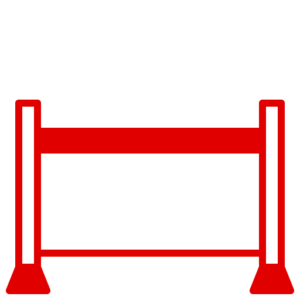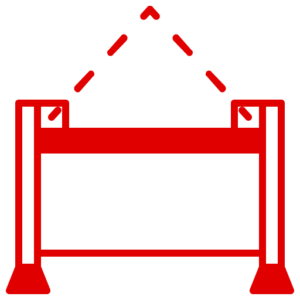News
Electrical Safety Guidelines for Stillages: Ensuring Compliance and Workplace Safety
When it comes to utilising stillages in the workplace, ensuring electrical safety is of paramount importance. Adhering to the PUWER (Provision and Use of Work Equipment Regulations) guidelines is essential for creating a secure work environment while mitigating electrical hazards. In this blog post, we will outline a comprehensive set of steps that Lowe Stillages & Cages recommends following to comply with electrical safety requirements and foster a culture of workplace safety.
- Conduct a Risk Assessment: To initiate the process, perform a thorough risk assessment that specifically focuses on electrical safety hazards associated with stillage usage. Identify potential risks such as electrical wiring, proximity to power sources, or contact with electrical equipment. This assessment forms the foundation for implementing appropriate control measures.
- Identify Control Measures: Based on the findings of the risk assessment, implement suitable control measures to mitigate electrical safety risks. These measures may include engineering controls, administrative controls, or personal protective equipment (PPE) requirements. Each control measure should align with the identified risks and best practices.
- Regular Electrical Equipment Inspection: Regularly inspect all electrical equipment used in conjunction with stillages, such as electrically powered lifting devices or machinery. Ensure that the equipment is properly maintained, and all electrical components are in good working condition. Adhere to manufacturer guidelines and applicable electrical safety regulations to ensure maximum safety and reliability.
- Establish Electrical Isolation Procedures: Create clear procedures for isolating electrical power sources when working with stillages. It is crucial to ensure that employees are aware of the necessary steps to isolate and de-energise electrical equipment before conducting any work. This practice significantly reduces the risk of electrical accidents and injuries.
- Grounding and Bonding: To prevent the buildup of static electricity or electrical charges, it is essential to adequately ground or bond stillages. Utilise appropriate grounding or bonding techniques as per electrical safety standards. Proper grounding and bonding contribute to a safer work environment by dissipating electrical energy effectively.
- Manage Electrical Cables: Properly manage electrical cables used in the vicinity of stillages to minimise tripping hazards and prevent damage. Avoid running cables across walkways or areas where they may be crushed or exposed to excessive wear. Implementing effective cable management practices reduces the likelihood of accidents caused by electrical cable-related incidents.
- Provide Training and Competence: Empower employees with comprehensive training on electrical safety procedures and safe work practices specific to stillages. Ensure that employees understand the risks associated with electricity, can identify electrical hazards, and are competent in following electrical safety protocols. Regularly refresh training programs to keep employees up to date with the latest safety standards.
- Implement Electrical Permit Systems: If required by local regulations or company policies, implement an electrical permit system. This system ensures that qualified individuals assess and approve electrical work before it is carried out, minimising the risk of electrical hazards. Compliance with permit procedures enhances safety and accountability within the workplace.
- Establish Lockout/Tagout Procedures: Develop lockout/tagout procedures for electrical equipment associated with stillage operations. These procedures ensure that energy sources are locked out or tagged out during maintenance, repair, or servicing activities to prevent accidental energisation. Strict adherence to lockout/tagout procedures is crucial to protecting employees from electrical hazards.
- Provide Personal Protective Equipment (PPE): Supply employees with appropriate PPE for electrical safety, such as insulated gloves, protective clothing, or safety footwear. Train employees on the proper use and maintenance of PPE to mitigate electrical risks effectively. By equipping employees with the right protective gear, potential injuries can be minimised.
- Ongoing Monitoring and Maintenance: Regularly monitor and maintain electrical equipment used with stillages to ensure continued safety. Conduct periodic inspections, testing, and maintenance of electrical components to identify and address any potential electrical hazards. Proactive monitoring and maintenance practices significantly contribute to a safe working environment.
- Compliance with Electrical Regulations: To ensure full compliance, stay updated with applicable electrical safety regulations, standards, and codes of practice. Regularly review any changes or amendments to electrical safety requirements. Staying well-informed is vital for maintaining a culture of compliance and ensuring the ongoing safety of your workforce.
By following these steps, employers can effectively comply with electrical safety requirements when using stillages, in accordance with PUWER guidelines. Prioritising electrical safety promotes a safe work environment, reduces the risk of electrical accidents or injuries, and ensures ongoing compliance with relevant electrical safety regulations and guidelines. Lowe Stillages & Cages encourages businesses to implement these measures to protect their employees and create a secure workplace.














